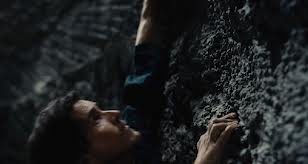
“Thieves respect property. They merely wish the property to become their property that they may more perfectly respect it.” (The Annotated Thursday, Chesterton, paperback, 1999 Ignatius press, page 81).
This quote leapt into my head when I was watching The Dark Knight Rises the other night – I showed the whole series to my teens this summer, and I continue to be impressed at how well thought out and (generally) well told this story is.
I thought of Chesterton while watching Anne Hathaway’s excellent Cat Woman. This young woman certainly respects property, and wishes to respect it more perfectly by making it her own! She is a great contrast to the chief villain, who is a nihilistic anarchist. There’s been some talk on the internet about how the movie was influenced by the Occupy movement, with this villain, Bane, encouraging violence against corporate owners. That reading is simplistic on two counts. For one thing, the various democratic uprisings around the world have been composed of ordinary people seeking freedom and justice. The terrorist Bane pays lip service to such ideals, but, in fact, he intends to destroy Gotham and evenyone in it – not just the wealthy and corrupt one percent. Bane is an utter nihilist. It may amuse him to let criminals sit in judgement on policemen and bankers, but, in the end, he will kill the criminals, too. No one and nothing is safe from him.
And the second point? The kangaroo court in The Dark Knight Rises has a very obvious literary precedent. It’s one the filmmakers were clearly aware of, since they call attention to it with a direct quotation. Here’s a rather abbreviated version: “It is a far, far better thing that I do, than I have ever done; it is a far, far better rest I go to than I have ever known.” Those, of course, are the final thoughts of Sidney Carton in A Tale of Two Cities, as he goes to his death in order to save Charles Darnay’s life. It’s very clear that, in the final film especially, Nolan and his crew are retelling A Tale of Two Cities. Bruce Wayne is Charles Darnay, a wealthy young man of privilege who has a conscience and wants to make his city a better place. But he – as the Batman – is also Sidney Carton, the bitter, cynical, but ultimately heroic young man who saves Darnay. Batman may not have saved himself, or Bruce Wayne, but he quite definitely saves Gotham and makes a better future possible.
I’ve read some online critics who thought the final scene in the film – Alfred’s vision after the funeral – simply silly. Batman could not have survived, they say. And no, of course he couldn’t. But that’s not the point. This vision is just that – a vision, an expression of faith, and a reward for that faith. For faith is “The substance of things hoped for, the evidence of things not seen”. (Hebrews 11:1 King James version). That quote – like the Chesterton one – actually popped into my head as I was watching the movie. IMHO, any popular movie that makes me think of Chesterton, Dickens, and the Letters of Paul is doing something right.
My two cents! And I haven’t even gotten to the climbing scene, or the relative subtlety with which the villains are presented. I can’t say I loved these movies; they were too violent for me, and too full of grotesques, but I think they were very well cast and acted, and told a solid story with a lot to chew on. What do you think?
